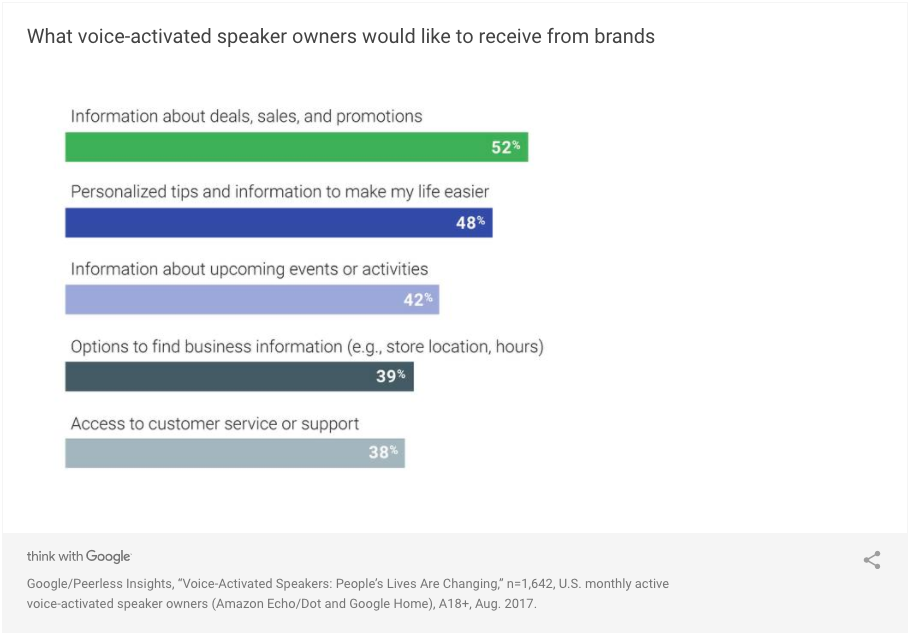With recent advancements in AI and natural language processing, voice-enabled digital assistants are being integrated into everything from our smartphones and TVs to our vehicles. According to Google, 20% of mobile search queries submitted via its app are through voice search. Consumers are increasingly opting to search for things with their voices rather than typing.
Consumers aren’t the only ones embracing this trend- brands are jumping on board as well. Domino’s Pizza, for example, now allows customers to place their orders directly through the Amazon Alexa without having to type a single word.
According to eMarketer, 45 million voice-assisted devices are currently being used in the U.S., and that number will rise to 67 million by 2019.
Key Stats:
- 50% of all searches will be voice searches by 2020: comscore
- 72% of people who own a voice-activated speaker say that their devices are often used as part of their daily routine.
- Mobile voice searches are 3X more likely to be local-based than text: Search Engine Watch
- 41% of people who own a voice-activated speaker say it feels like talking to a friend or another person.
A Shift in Consumer Behavior
More and more, people are adopting voice-activated speakers such as the Google Home and Amazon Alexa, but what does this shift in consumer behavior mean? People have come to expect seamless, personalized experiences that make their lives easier. According to Think With Google, talking to a virtual assistant instead of having to type is more time efficient, which is why people are incorporating them into their daily routines. The top reasons that people use voice-assistants include:
- It is easier to multitask
- It enables consumers to do things faster than other devices
- Users get instant answers and information
- It simplifies daily routines
An Opportunity for Brands
Marketers should start preparing for the impact that voice search will have. By 2021, early adopter brands that redesign their websites to support visual and voice search will increase digital commerce revenue by 30%.
A case study reveals that there are three main characteristics of voice search:
- They are more likely to be about an on-the-go topic
- They are less likely to deal with sensitive information
- They generally do not include searches for websites that will require a user to have significant interaction.
According to an article by AdWeek, brands should not put their focus on keywords, but rather on natural language queries. People are more likely to ask more detailed questions with voice. For example, instead of asking, “Where is a car wash near me?,” users will ask, “Where is the top-rated car wash within a 15-minute drive from my current location?” Technology that interprets what consumers really want is key.
In 2018, brands will begin to pay even more attention to voice assistance. IBM Watson has already capitalized on voice-assistance technology, launching AI-powered ads that allow people to “talk” to the ads, and request more information. This gives brands more insight into consumer preferences. According to IBM Watson, “Brands can use the insights gleaned from the engagements with consumers to help with marketing plans and strategies, from product to supply chain management to marketing.”
At RevContent, our mission is to power a more personalized web, and to connect with users on a deeper level. We value the success of our partners, and with voice assistance technology, publishers and advertisers in our network have the opportunity to build more personal relationships with their readers.





